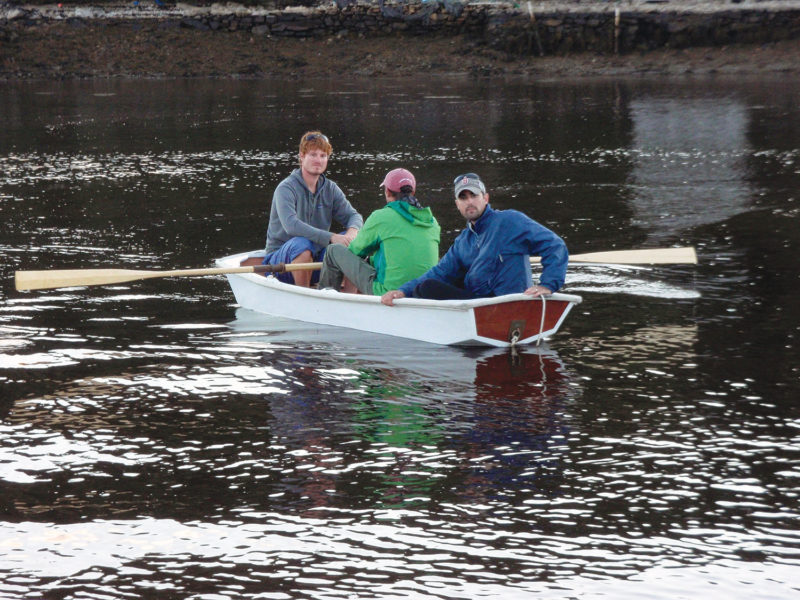 Nick Owens
Nick OwensThe diminutive pram, less than 9’ long, has remarkable carrying capacity. A centerline seat allows the person rowing to choose from two stations, depending on the boat’s fore-and-aft trim.
A thing is right,” Aldo Leopold writes in A Sand County Almanac, “when it tends to preserve the integrity, stability, and beauty of the biotic community. It is wrong when it tends otherwise.” On my bookshelf, Leopold shares space with worn volumes of those other writers more familiar to the boating community, among them L. Francis Herreshoff, Pete Culler, and John Gardner. Small boats do, in fact, represent a “biotic community” of sorts, and Sam Devlin’s Lit’l Petrel design is, to use Leopold’s evaluation, “right.”
Three years ago, my son acquired a magnificent 1959 William Tripp 32‘ sloop, FREYA. Mahogany-planked over oak frames, she has beautiful lines and vast amounts of professionally maintained varnish. Promising him an appropriate tender as a “boat-warming” present, I began my search for a dinghy worthy of such a companion.
I had specific characteristics in mind: The boat had to have the capacity to carry three passengers safely through the choppy seas of the home mooring field, it had to have good manners while being towed, it had to be easy to enter and exit both on shore and alongside FREYA, it had to have a clean and easy-to-maintain interior, and it must have good performance under oars.
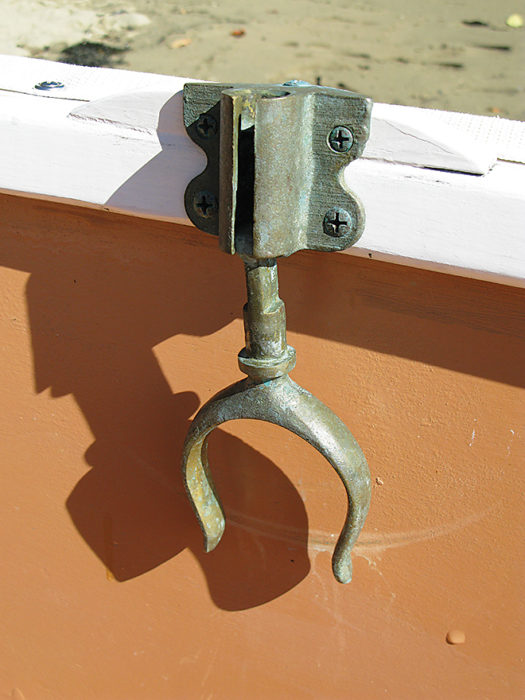 Tom Jackson
Tom JacksonVintage Wilcox-Crittenden oarlocks retract with a minimum of fumbling, keeping the horns from damaging the topsides as the dinghy comes alongside and holding the oarlock in easy reach when needed.
Because its transom bow offers the best carrying capacity for its length, a pram is a logical choice for a tender and has the further benefit of permitting “dry feet” exits over the bow. Additionally, a novel fore-and-aft rower’s seat allows for improved trim with varying loads. Sufficient beam, a deep-V cross-sectional shape, substantial rocker, and a generous skeg provide the good manners needed not only for boarding but also for being towed. The latter characteristic applies only if the pram is appropriately positioned behind the towing craft. These features also assure that a craft will row in a straight line when desired without weathercocking when the breeze is on the beam, but at the same time ample rocker will allow her to turn 360 degrees within her own length. Finally, modern construction methods assure a clean, easily maintained interior.
When I saw Sam Devlin’s Lit’l Petrel among the new designs on the Devlin Designing Boat Builders website, I thought I had found a winner. Devlin’s designs can be instantly downloaded, gratifying the impulse that most of us have to see more right away. After more thorough review, all seemed right, and the decision was final.
Living on the coast of Maine, quality boatbuilding materials are readily obtained. Before long, I had the 6mm okoume plywood scarfed and the frames and planking panels cut. The stitch-and-glue construction method proceeded quickly, and in short order the hull was shaped and the finishwork underway. Knowing the hard life an even well-cared-for dinghy has on our rocky shores and crowded dinghy floats, I added an additional 6-oz layer of fiberglass cloth to the exterior. With the addition of the gunwales, inwales, and knees, the little boat stiffened up nicely.
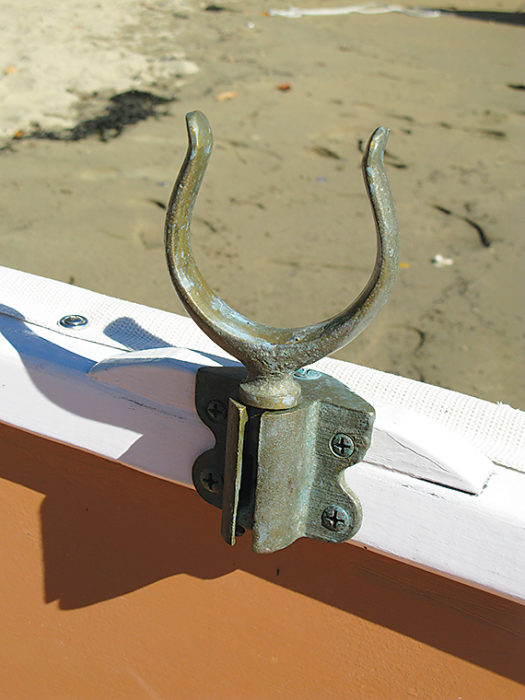 Tom Jackson
Tom JacksonThe oarlock sets quickly.
Flotation is provided beneath the stern seat. I installed polyester foam gunwale guards around the entire perimeter to shield her against damage from inevitable contact with docks and other dinghies and also to protect FREYA’s beautiful topsides. I also opted for the traditional towing ring, mounted on the bow transom with a substantial eye strap and supported by a robust bronze backing plate. For her two rowing positions, four old-fashioned and now hard-to-find Wilcox-Crittenden Davis-style bronze oarlocks completed the job.
Discussing a rowing boat without discussing the means of propulsion would be like describing a powerboat without ever mentioning the engine. A proper pair of oars can make all the difference. Off-the-shelf oars tend to be too heavy, poorly balanced, and too stiff, lacking any “life.” Fortunately, light and clear spruce is abundant and inexpensive in Maine. Following plans in Culler’s Boats, Oars, and Rowing, I made a nice pair of well-balanced 71⁄2‘ oars, a pleasurable and easy conclusion to the project. Leathered and well tallowed, they, too, have exceeded expectations, feathering effortlessly and easily propelling CELIA B gracefully about the anchorage, and—I can’t help but also add—in a far greater style than the proliferating inflatable abominations with aluminum oar shafts and plastic blades.
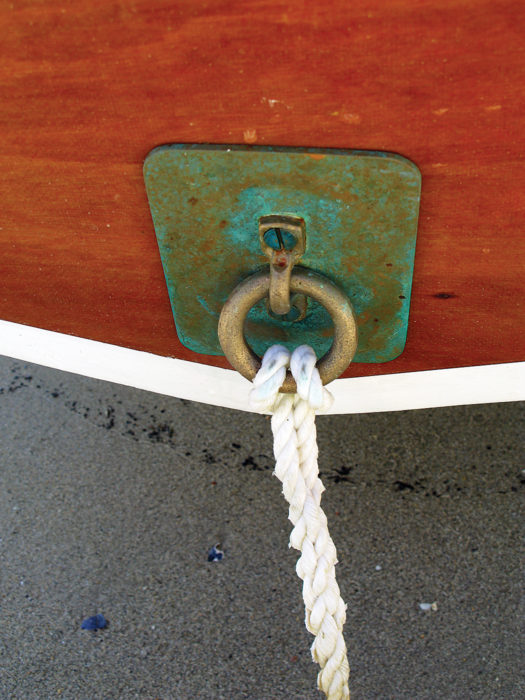 Tom Jackson
Tom JacksonA substantial bronze ring very stoutly set low in the bow transom assures that the tender tows well and securely.
CELIA B’s sea trials began immediately after her launching in Casco Bay and a two-day trip to Rockport, Maine. She settled off the stern as we prepared to drop the mooring, and her motion astern was smooth and deliberate, lacking any of the sudden accelerations and direction changes induced by a change in the tension of the painter. Leaving Casco Bay, we encountered the predictably unpredictable seas off the mouth of the ebbing Kennebec River. Confused seas, wind and tide in conflict with one another, fog, rain, and gusts to 25 knots gave the little boat a less-than-gentle introduction to her life’s work. With her tow line lengthened to about 30‘, she rode just behind the second stern wave. There, she was as well-behaved as could be, with no sudden high-speed surfing runs or attempts to sneak her bow under FREYA’s transom.
As we entered New Harbor on the Pemaquid peninsula and picked up an unused lobsterman’s mooring, I pulled her near to bail the rainwater out. At one point I dipped my finger in the bilgewater to taste for any salt suggesting she may have taken seas aboard. Fresh as a bottle of Poland Spring! The lobstermen from whom we sought permission to use the mooring expressed his admiration, adding a final exclamation point to CELIA B’s first day at sea, for whether the compliment is given for a proud boat-handling moment or for the boat herself, when it is delivered by men who earn their livelihood aboard boats, it has a sweeter ring.
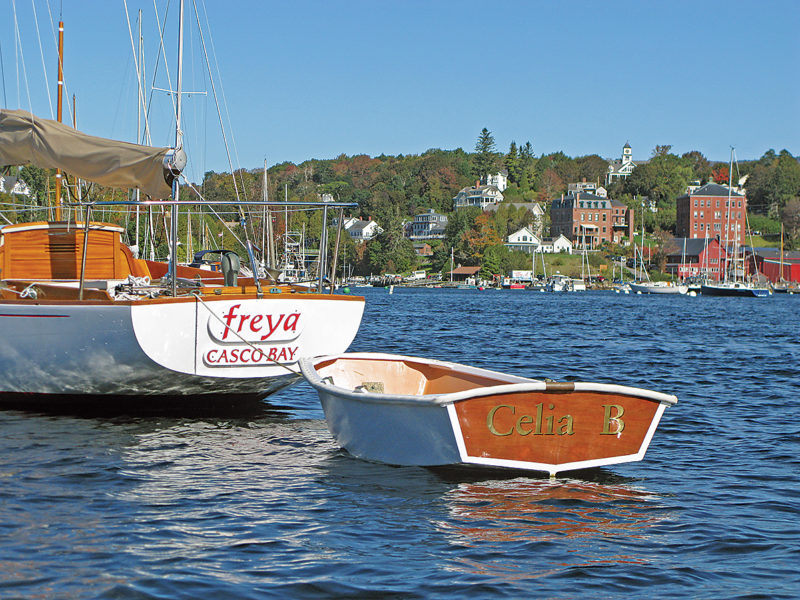 Tom Jackson
Tom JacksonThe author wanted his son’s 32’ yacht to have a complementary tender, something more distinctive than the ubiquitous inflatables. CELIA B serves the role well.
From the tightly packed dinghy docks of Northeast Harbor to the sandy South Beach of Roque Island, CELIA B transported her crew in both style and comfort. Entering a dinghy from the cockpit always presents challenges, as the boat invariably seems to want to depart for shore before the passengers are properly installed, creating much flailing about and occasional amusement for observers. However, CELIA B’s wide, deep-V bilge panels, hard chine, and ample skeg made for a remarkably stable entry, with secure footing and no premature departure. As she came ashore or alongside a dock, the dinghy’s transom bow afforded a close approach, allowing passengers to disembark over the bow with dry feet.
Among all CELIA B’s assets, her most endearing to me was her performance in rowing. I have built numerous performance fixed-seat pulling boats, including Gardner peapods, a Chamberlain gunning dory, and most recently a 17‘ double-ended Herreshoff rowing boat. However, in her own short way, the Lit’l Petrel is a delight to row. She tolerates a wide range of loading and allows the oarsman to adjust with two rowing positions. Her beam gives a tolerance to less-than-perfect positioning side to side, minimizing any list. The deep V and generous skeg allow her to track well and minimize any rounding up into the breeze. She will turn in her own length. Finally, coupled with a proper set of oars she moves along effortlessly at hull speed and far more gracefully than her inflated brethren.
If imitation is indeed the best form of flattery, then let it be known that I’m already planning a Lit’l Petrel to serve as my tender, too.
Lit’l Petrel 9 Dinghy Plans and finished boats are available from Devlin Designing Boat Builders.
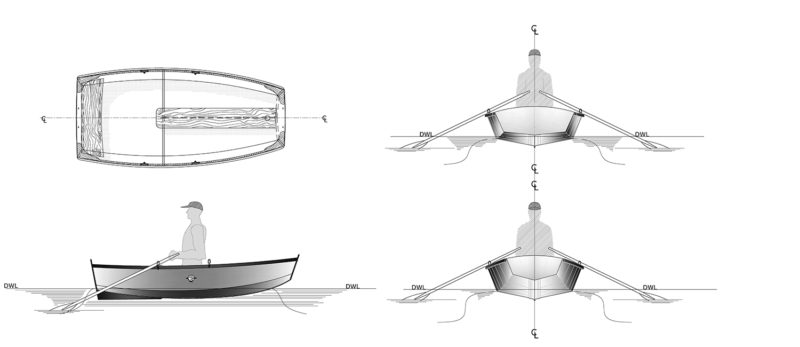 Devlin Designing Boat Builders
Devlin Designing Boat BuildersSam Devlin designed a simple V-bottomed pram with ample rocker to serve as a pragmatic and sensible yacht tender. The pram bow assures maximum carrying capacity and allows passengers to step ashore with dry feet.
Particulars:
LOA: 8′ 10 1/4″
Beam: 4′ 2 3/8″
Draft(cb up): 5″
Weight: 63 lbs
Load capacity: 340 lbs
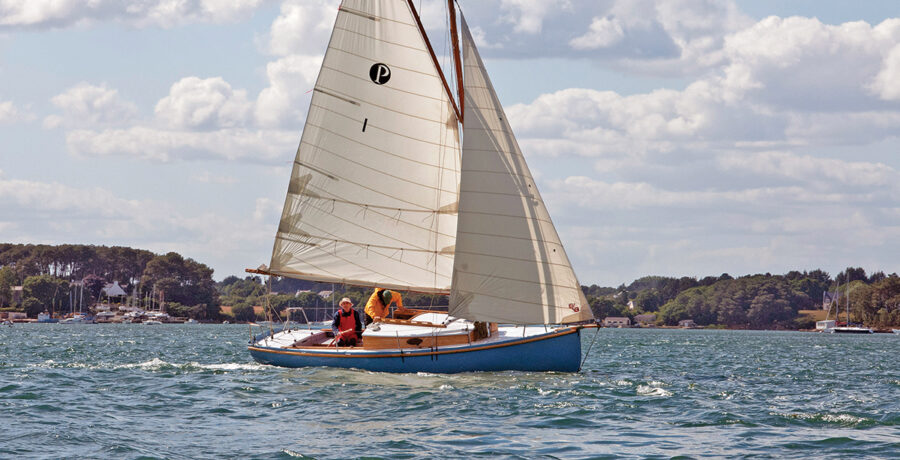
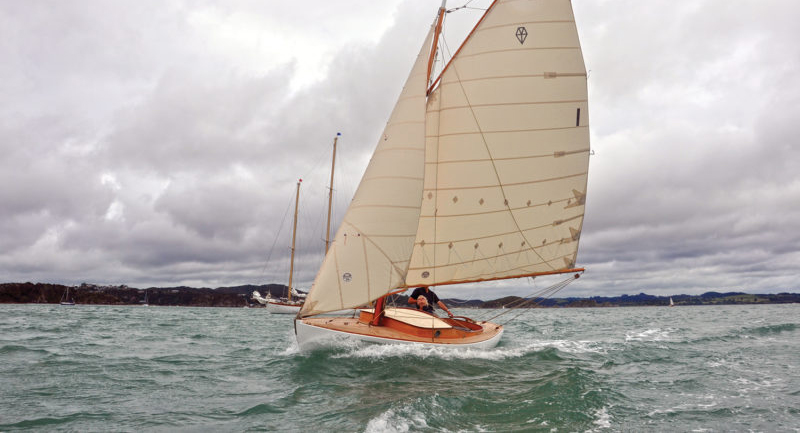
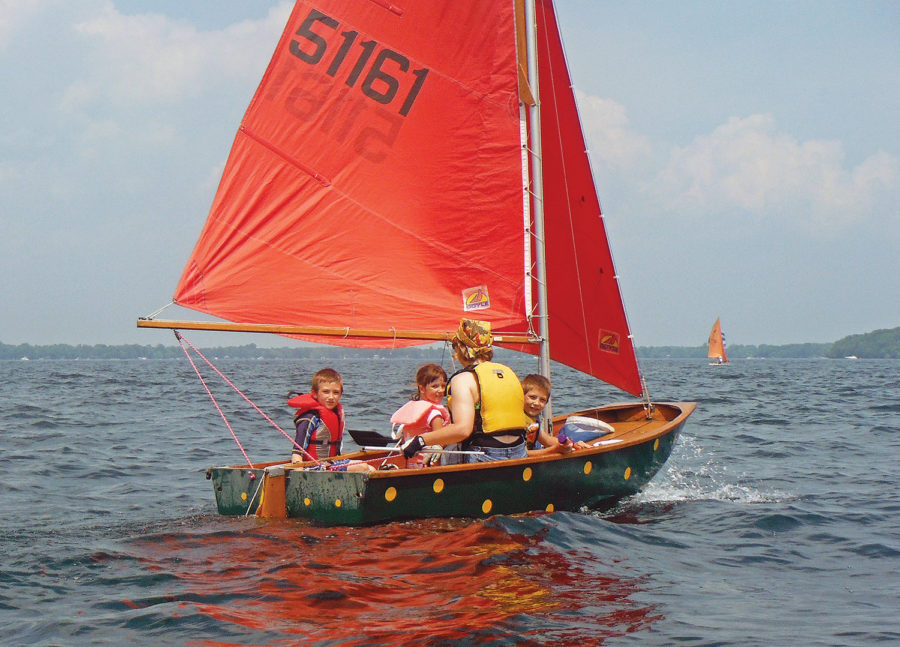
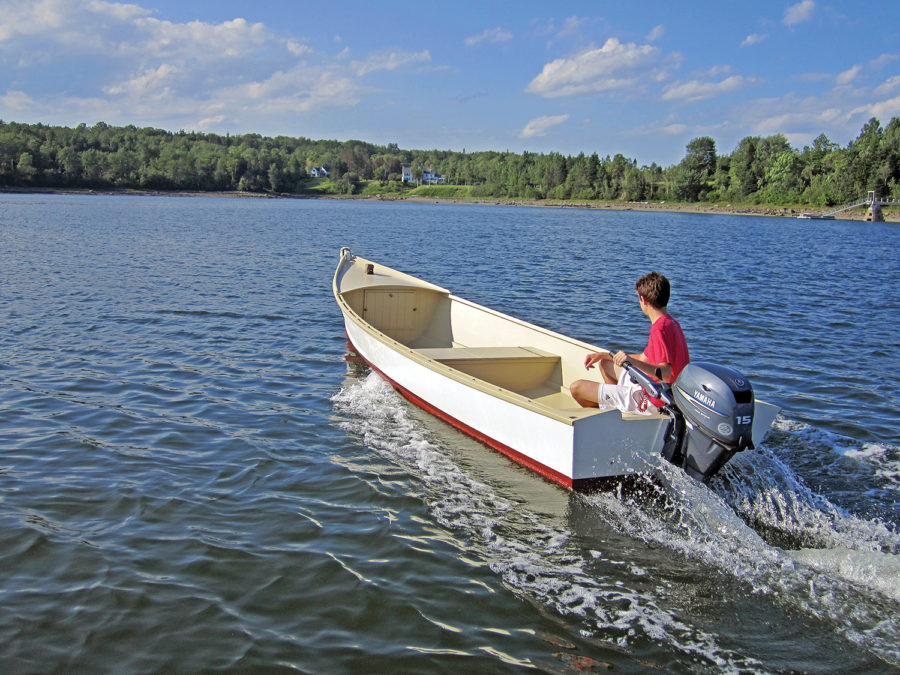
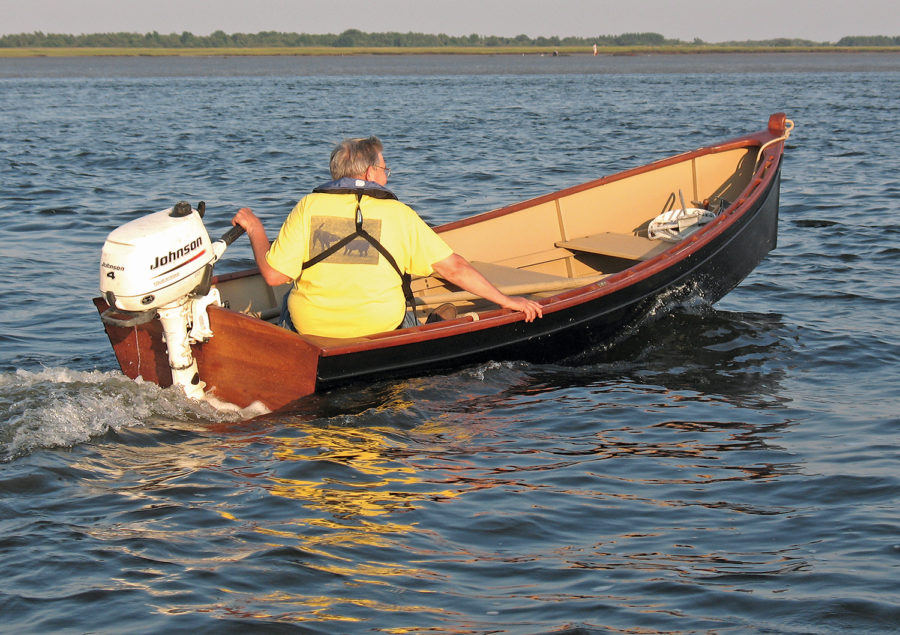
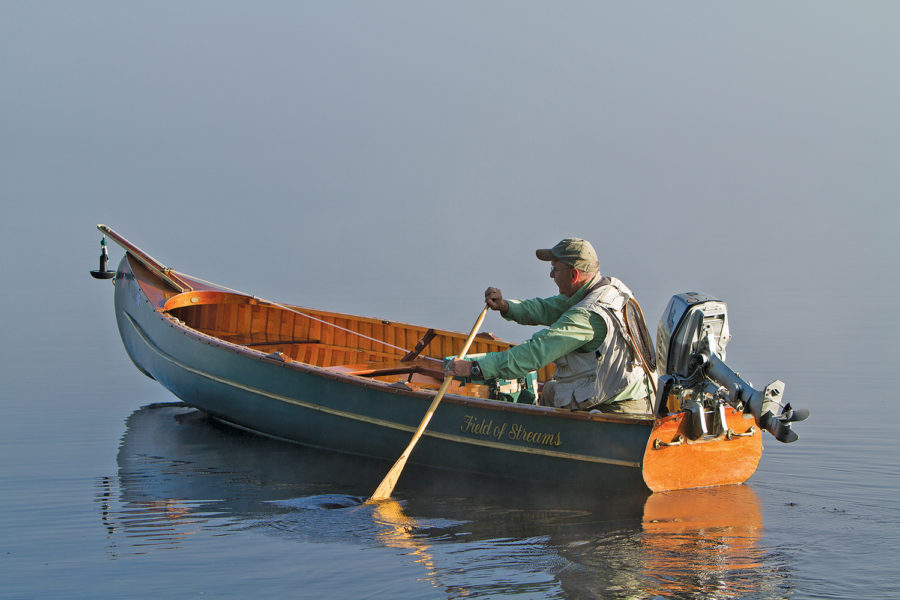
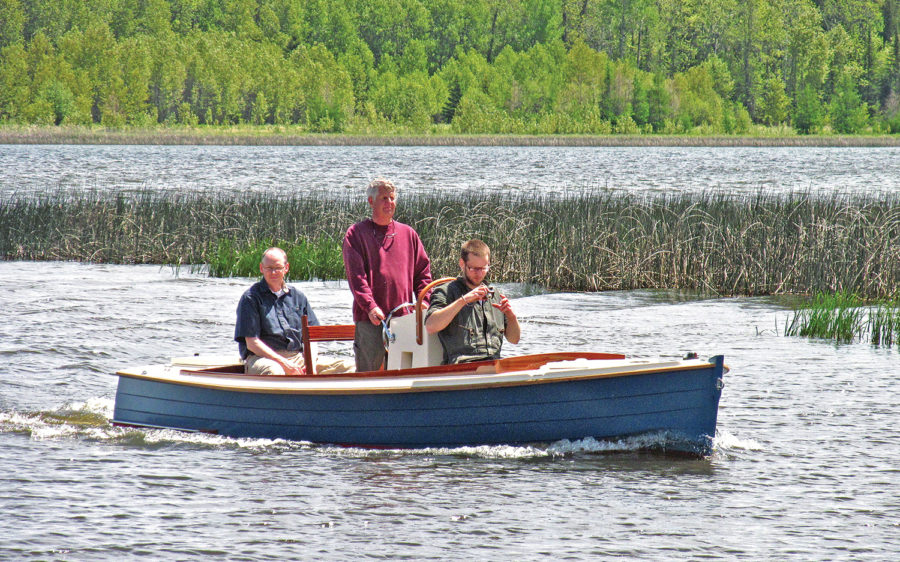
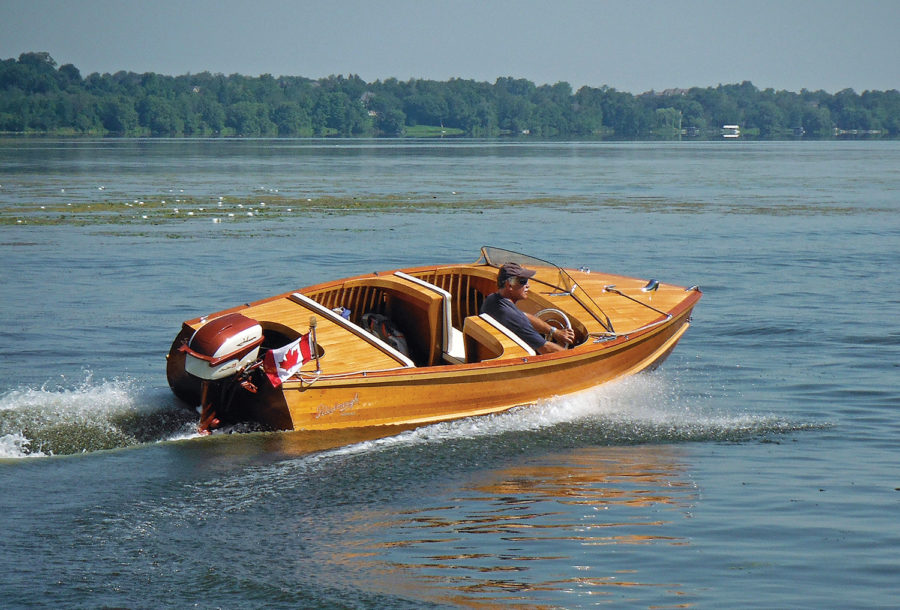
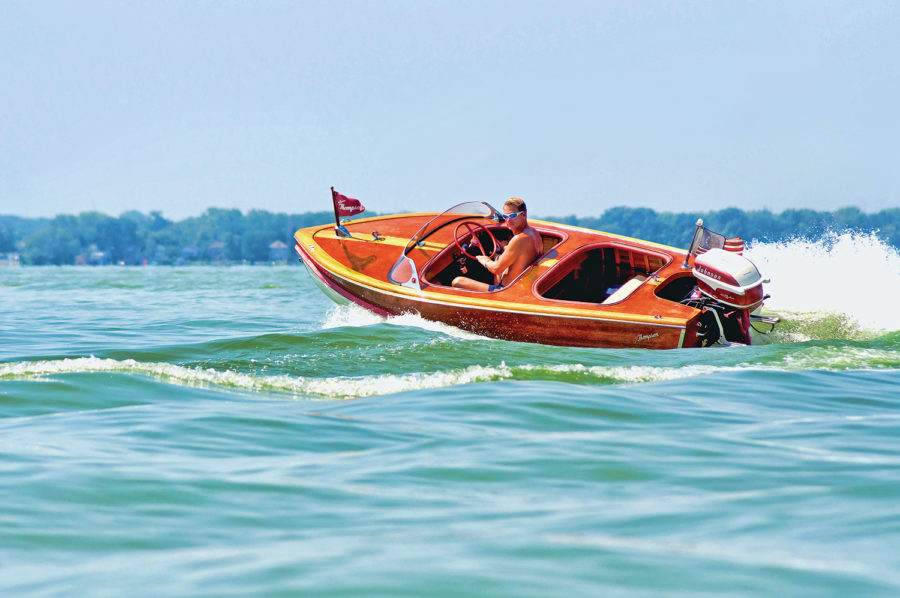
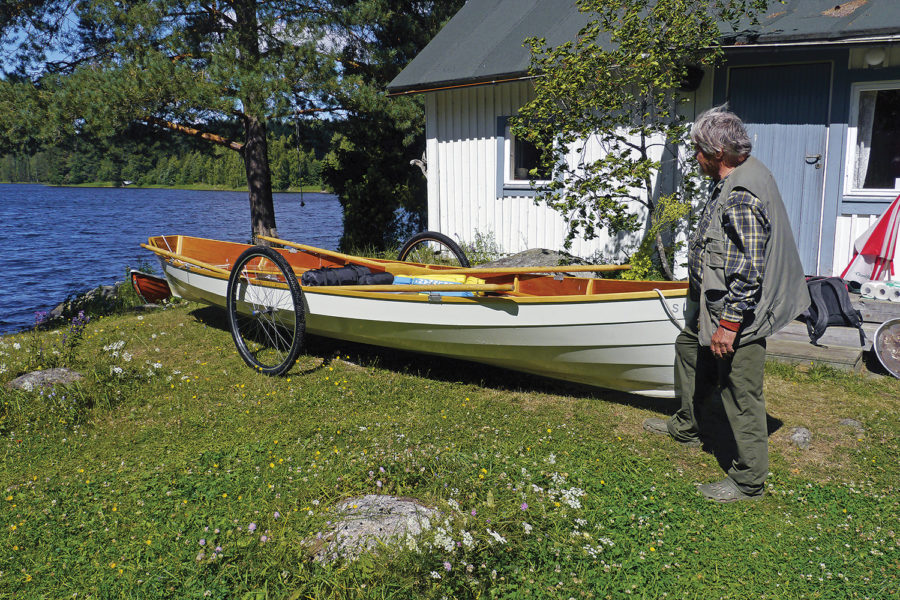
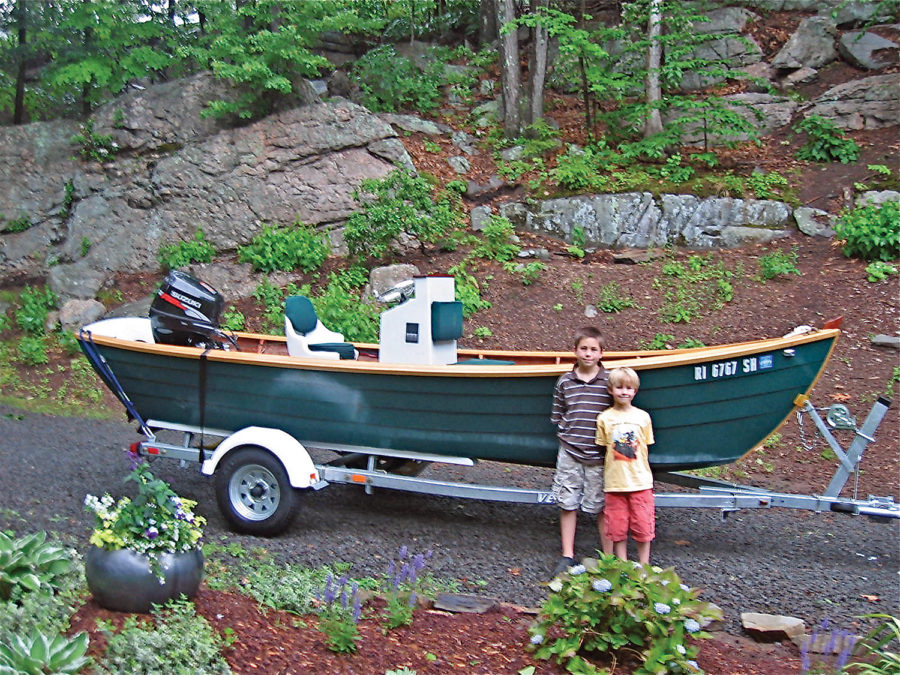
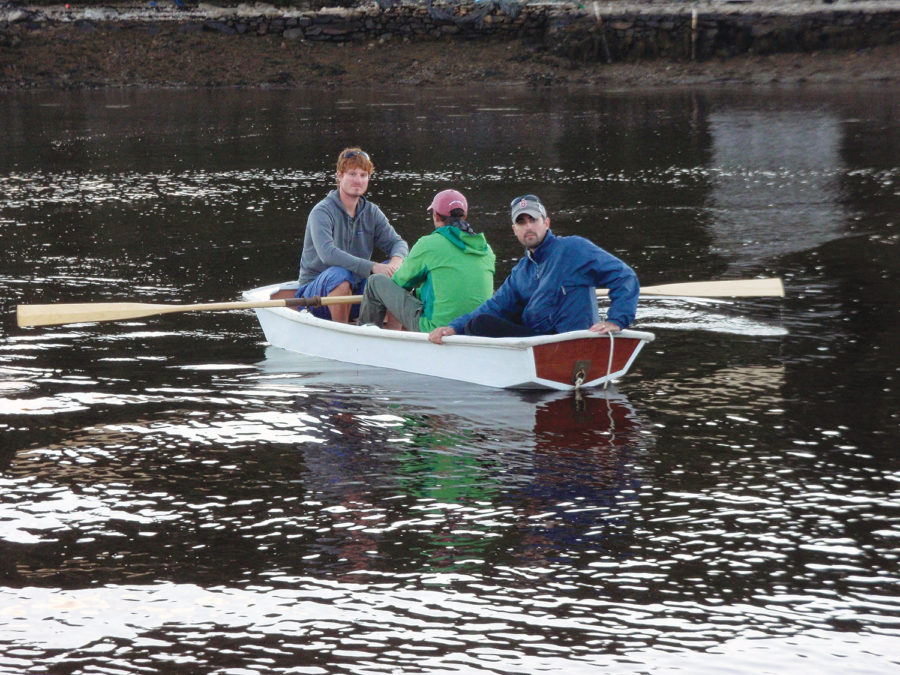
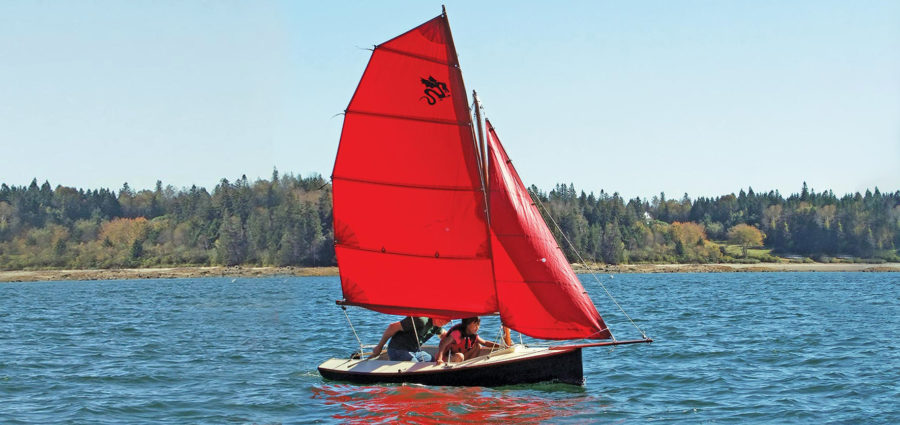
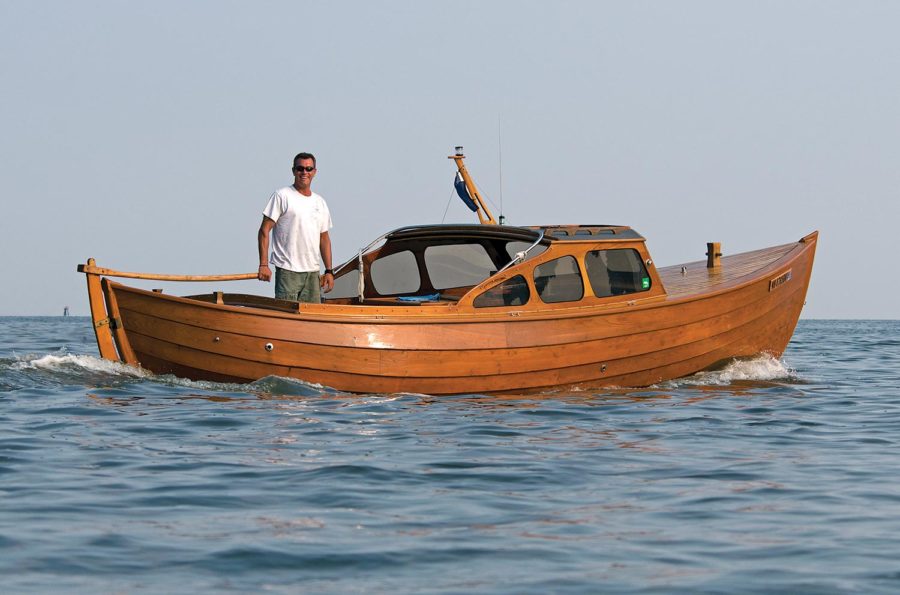
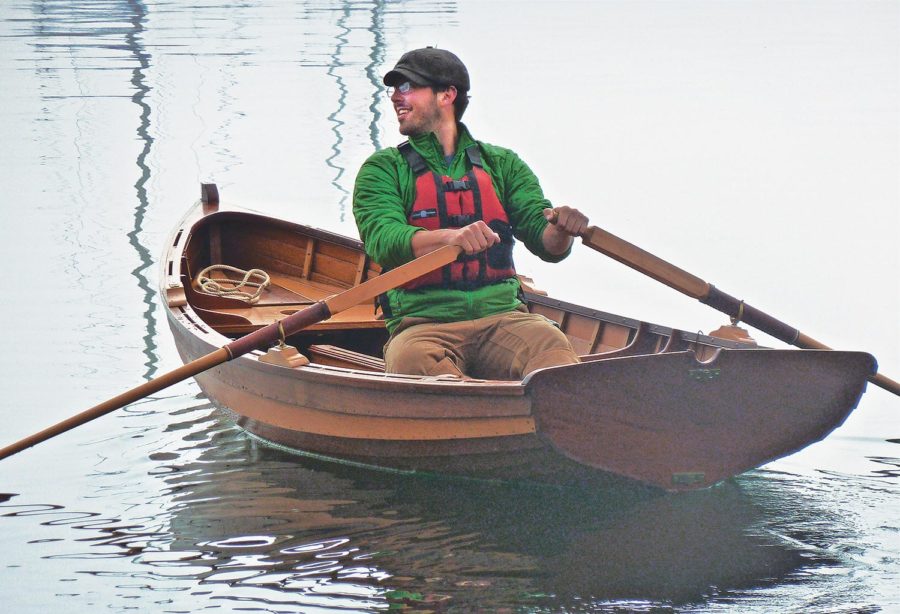
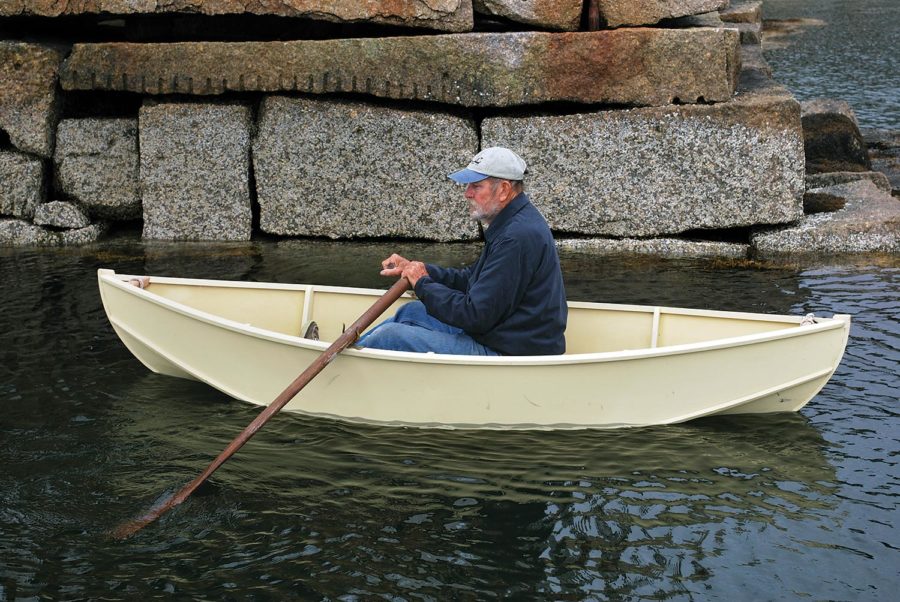
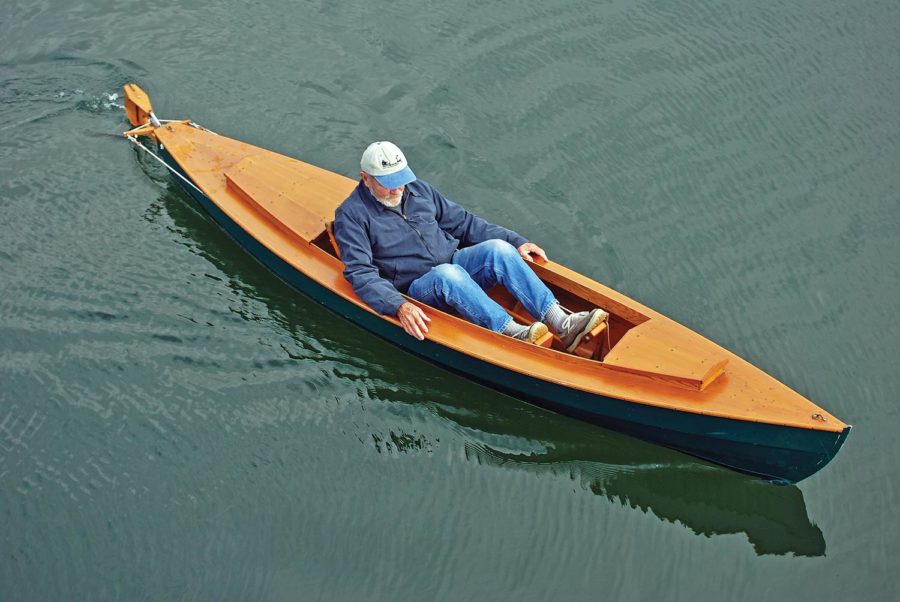
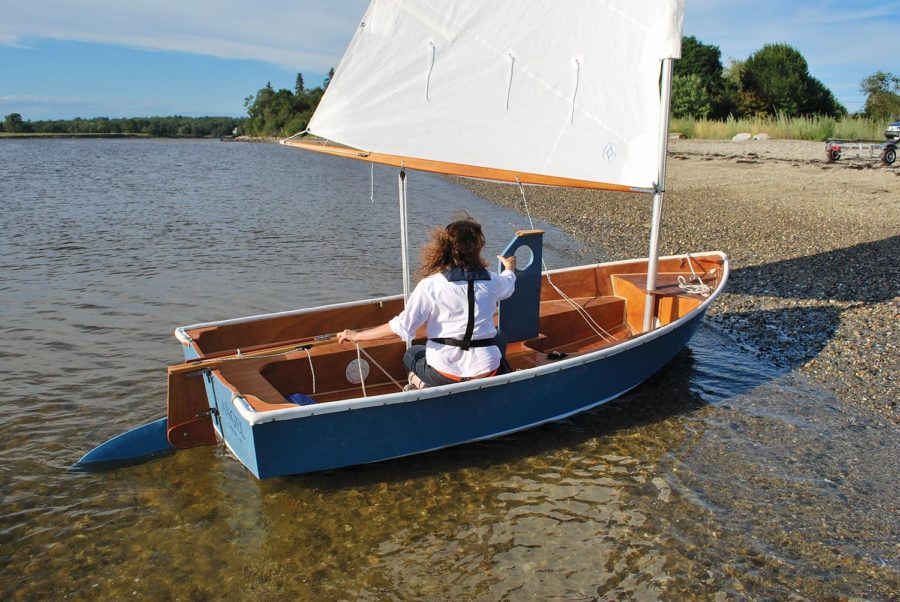
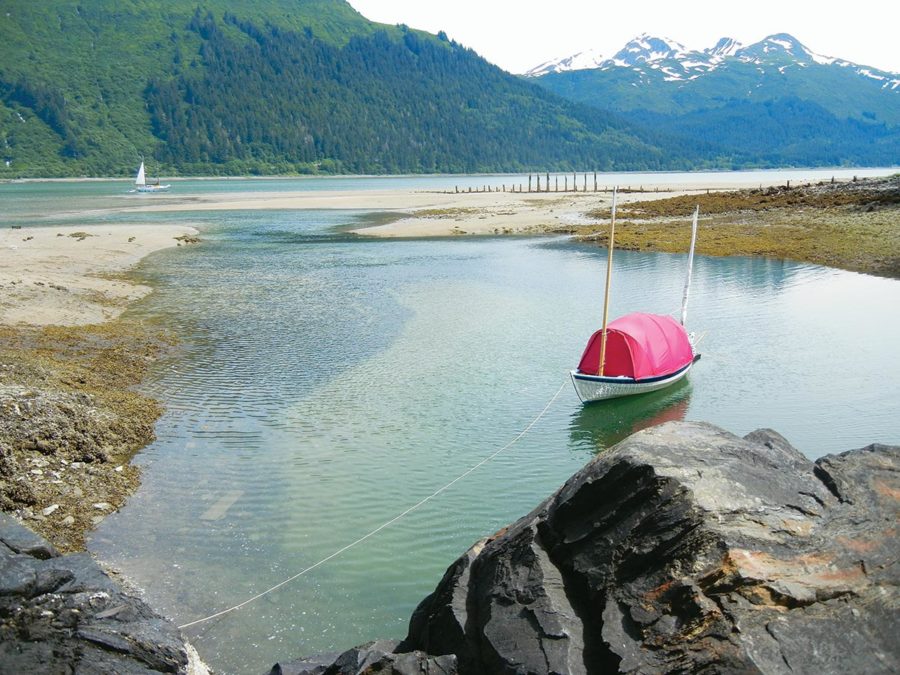
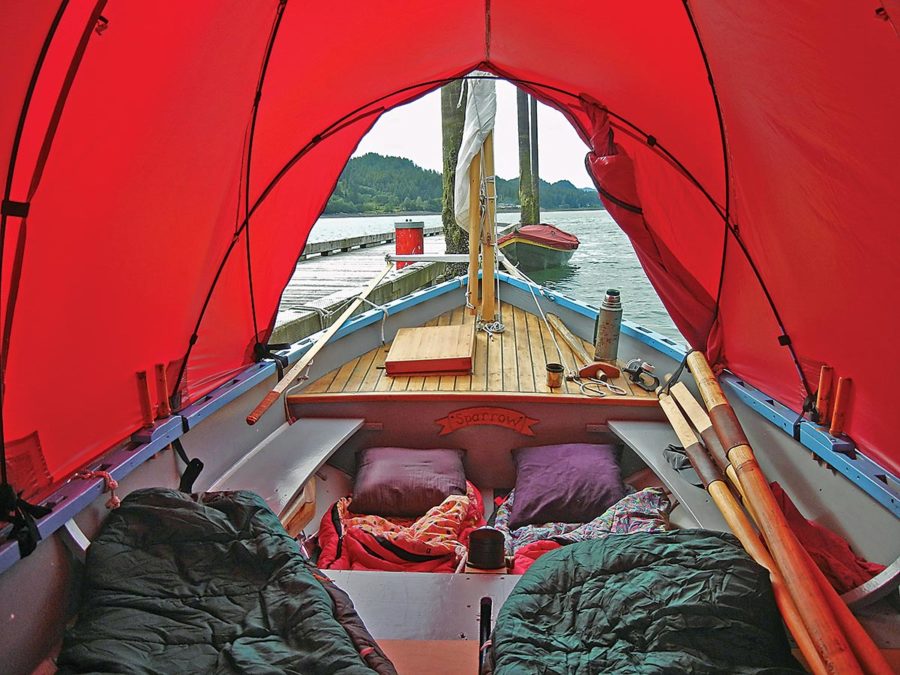
Join The Conversation
We welcome your comments about this article. If you’d like to include a photo or a video with your comment, please email the file or link.